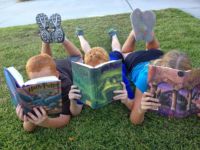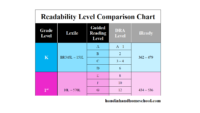Phonics, the 2nd stage of the reading process (after phonological processing), teaches children the link between letters and the sounds they make. Phonics instruction provides children with skills for blending individual sounds into words. With consistent practice, children eventually learn to read words quickly and easily. They move from sounding out simple 3-, 4-, and 5-letter words to being able to read the word on sight. As your child grows older, they can rely on their basic phonics skills to break down larger, more complex words they come across.
While phonics involves reading and writing, you can unschool phonics without using endless worksheets. Yes, I said that: You can unschool phonics. No, I’m not referring to free-range unschooling, where you leave a few toys around and hope your child magically learns to read on their own. But, as long as you, the parent, have a basic understanding of how to order and introduce phonics skills, play-based and physical activities can help you teach essential phonics skills.
5 Steps to Learning to Read:
- Phonological Awareness
- Phonics
- Fluency
- Vocabulary Development
- Reading Comprehension

- Play concentration, where you match upper and lower case letters
- Play dominoes, where you match upper and lower case letters
- Play bingo, where you call out the names of letters OR you say the sound of the letter
- Using magnetic letters on a refrigerator door, build basic 3-letter words by calling out the sounds of each letter
- Complete dot-to-dot pictures using letters (instead of numbers) to practice alphabet sequencing
- Read alphabet books to practice letter-sound associations
- Create your own alphabet books with stickers and cut-out pictures
- Practice writing letters with whole body motions using a bucket of water, a paintbrush, and an outside wall
- Practice writing letters with larger hand motor skills by rolling out play-doh letters
- Practice writing letters by tracing in sand or in a tray of salt

- Introduce word families
- Use word sliders to practice reading word families
- Create word family trees together and display on the wall as a visual reminder or learnt words
- Practice reading word rings, a series of flashcard words that have been previously learned
- Play file folder games that focus on discrimination skills, such as distinguishing between OW and OU words
- Introduce sight words into your child’s reading list
- Introduce easy-reader books to practice reading individual words as parts of sentences
Last modified on September 5, 2023




